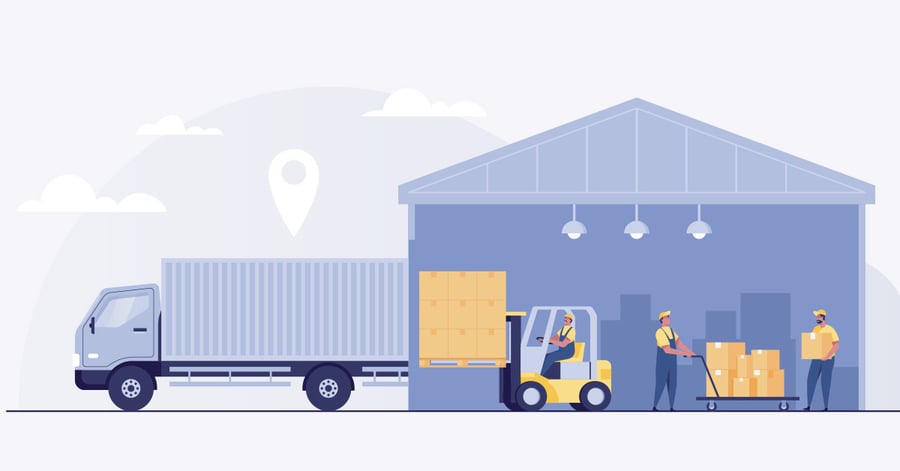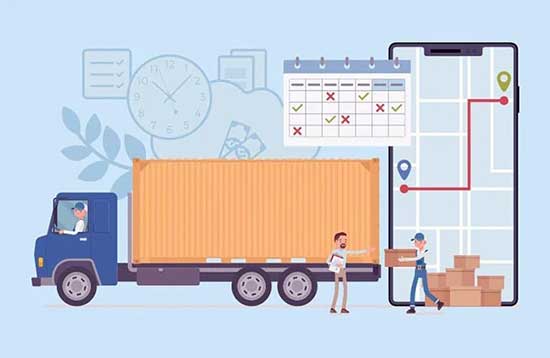
How Can 3PLs Handle Omnichannel Fulfilment?
Published :

Omnichannel fulfilment is a challenging field as newer formats for order fulfilment come up practically every day. In its earliest avatar (that continues into the present), it meant delivery to the brick-and-mortar stores (or a string of them, irrespective of their sizes and places) from where customers could procure their order.
With brick-and-mortar stores seeing their market share dwindle by the day, it’s the likes of online stores like Amazon on one hand, and individual drop-shippers on the other who need to meet the mushrooming demand for customised deliveries. The customers’ orders need to reach their destination via direct delivery to premises or to a designated place (for pick-up by the customer) in the shortest possible time, which can be as short as a few hours. The solution could lie in the newest omnichannel delivery model that’s being tested world over - the use of dedicated drones!
The pandemic proved fertile ground for online business, given the exigencies. It was the much-needed shot in the arm for omnichannel fulfilment, considering the scale at which things moved online. Everything from necessities to luxuries saw online transit and added to making the omnichannel fulfilment industry robust and reliable.
While modes of order may differ, one thing remains. The commitment to fulfil orders by effecting deliveries on time and in the right state. In doing so, the ones entrusted with the responsibility to fulfil orders are the 3PL entities that, despite their size and heft, face various challenges, the prominent ones being:
Disconnect between what the customer wants, what the seller promises, and what finally transpires - While it’s easy to attract customers online with flashy websites, great offers, and even greater products, translating it into on-time deliveries across volumes, places, and omnichannel modes remains a challenge for the best 3PL service provider. Invariably, commitment to customers comes first and always stands to suffer the most.
In most cases, the disconnect is because the 3PL industry is too bogged down with handling operations than actually looking into the horizon to see what’s taking place next. In parts, that’s so given that the ones making the promises to the customers often don’t have a clue or understanding of issues on the ground. Common grounds are found much later down the line in time.
Lack of visibility - Omnichannel sales have resulted in unheard-of volumes of products moving about to fulfil orders. Warehouse throughput these days resembles a river in spate. If warehouse management systems providing visibility can’t manage the load or aren’t up to their desired capacities, it affects the marketers’ ability to retain and service customers. The shopper may not even look back once before heading to the competition. Besides, the sheer volumes can often overwhelm the best of warehouses, making 3PL companies seek newer places. This slip between the existing and the new can also result in reduced visibility of orders.
Overused systems - Omnichannel delivery nearly always keeps 3PL assets working to full capacities. Despite the best of technology and efforts, things can once in a while go awry, leading to piling up of stocks, loss of visibility, or delays in delivery. Unless alternate strategies are formulated much in advance and practised to perfection, such eventualities can hurt the working of 3PL entities.
Maintenance of systems - Omnichannel delivery demands unprecedented visibility in every direction. Most (if not all) 3PL companies have implemented newer systems, including IoT-enabled devices, RFID, edge-computing, and the like. While these bring great returns and quicker ROIs, these themselves call for maintenance and constant monitoring to avert any malfunctions. It remains a challenge to the 3PL to implement maintenance systems for devices that bring in additional costs.
Complacency and a lack of strategy to address issues - Omnichannel fulfilment is about creating workable strategies and alternatives that provide services right until the end. 3PL companies getting orders without the right strategies in place or a workable environment are common. In a sense, it’s the throwback of a more relaxed way of operating that has no place when you are dealing with an Amazon or a Flipkart.
Costs - Everything finally boils down to costs. Every small thing that a 3PL does for order fulfilment costs money. An increase in fuel prices is all that it needs to upset the applecart. Add to that the competition, which is ready to do the same work for less. This proves to be a double whammy! On the one hand, costs go up, and on the other, one has no option but to reduce prices to accommodate competition. This generates slender margins, and all the while, the marketers’ needs and demands seem to go through the roof.
3PL being purely a volume game, it’s always their aim to get volumes to offset fixed costs. There are some ways by which costs can be reduced while bettering the quality of omnichannel deliveries. These include:
Being aware of one’s operational strengths and weaknesses and playing on the same - 3PLs the world over have their own strengths and weaknesses that need to be addressed. The question lies in the applicability of the so-called strengths to the newer world of omnichannel deliveries. The advantages could lie in having larger areas for voluminous warehouses, access to technology, own road and rain resources, and others. Irrespective of strengths and weaknesses, the 3PL are expected to use them judiciously to bring faster movement and better visibility.
Investing in technology to increase visibility - Practically every day brings something new in the digital domain to increase visibility using IoT, edge computing, and AI. 3PL companies are known to employ people or buy organisations to access technology for smoothing crucial functions like using transportation management systems.
Creating strategies at the beginning and assigning responsibilities right down the hierarchy - You don’t make strategies when you’re neck-deep in work. It ought to be done in the first instance. Bringing about change could be smart contracts and blockchain that can revolutionise the risk-return paradigm.
Investing in the right storage and delivery systems with alternatives - 3PL handling multichannel fulfilment has to be quick on its feet, with the entire supply chains consisting of warehouses, stacking systems, and means of transport. Owned or on a lease, these should be flexible to cater to quick scaling up. Alternatives should also be lined up to back the existing systems.
Using the right platforms to address the maintenance needs of newer systems, including IoT devices - Platforms such as Datadog, Azure IoT Hub, Cloud IoT Core, and Hologram are the latest way to keep visibility devices in the right shape at all times.
They say nothing succeeds like success. That applies equally to 3PL, which can efficiently fulfil orders across multiple channels. Among the benefits that a 3PL can derive are:
These are interesting times in the 3PL and fulfilment business, given the boom in eCommerce and other means of business. To continue the same and remain in sync with omnichannel fulfilments, 3PL entities may have to go the extra mile and avoid complacency because almost nothing of the old world is left in the new.
Enterprise asset management (EAM) involves the management of mission critical assets of an organization throughout each asset's lifecycle. EAM is used to plan, optimize, execute, and track the needed maintenance activities with the associated priorities, skills, materials, tools, and information. The aim is to optimize the quality and utilization of assets throughout their lifecycle, increase productive uptime and reduce operational costs.
Enterprise asset management (EAM) involves the management of the maintenance of physical assets of an organization throughout each asset's lifecycle. EAM is used to plan, optimize, execute, and track the needed maintenance activities with the associated priorities, skills, materials, tools, and information.
The software helps in effective maintenance of assets through preventive, predictive, shutdown and breakdown maintenance strategies. The system also helps enterprises mitigate equipment risks by enhanced safety standards. The streamlined operations and improved asset performance helps organizations increase their investment effectiveness.
EAM is important because it helps organizations track, assess, manage and optimize asset quality and reliability. Asset intensive Organizations have hundreds, thousands, even millions of assets which needs to be maintained to maximize / optimize life of these assets to increase the return on investment.
The key features of effective EAM are:
Asset Intensive companies under the following Industries :
Contact us for a meeting and schedule a demo
This differs on case to case basis, based on the type of installation and unique industry specific requirements. Contact us for a meeting and schedule a demo.
This differs on case to case basis, based on the type of installation and unique industry specific requirements. Contact us for a meeting and schedule a demo.
Stay Connected, follow us on LinkedIn / Twitter to know more about EAM Software latest trends.

Ragunathan leads Go-to-Market and Branding for Ramco Systems’ Logistics product, bringing extensive experience in digital marketing and product launches. He has a proven track record of driving impactful strategies that deeply connect with target audiences. Passionate about solving complex problems, delivering scalable systems, and enabling organizational growth through innovation, he excels at collaborating with cross-functional teams. Ragunathan values continuous learning and is committed to building practical solutions that deliver real value.

All Rights Reserved. © Copyright 2024. Ramco Systems.